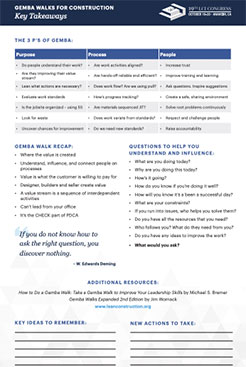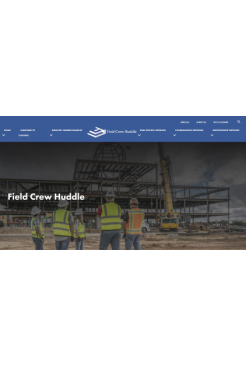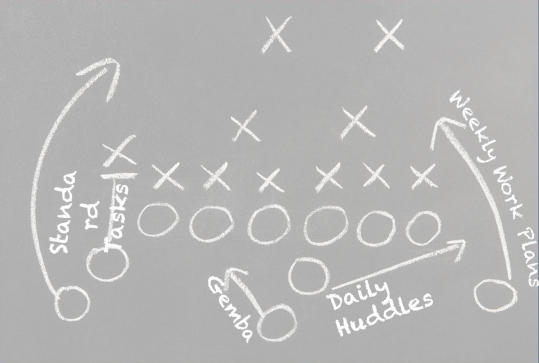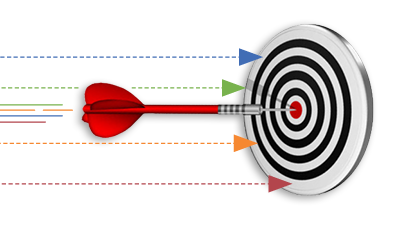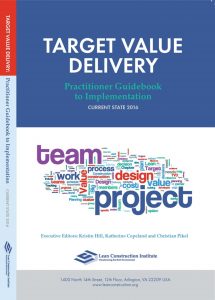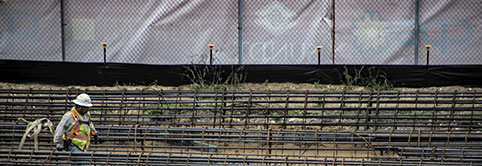Gemba Walk
What is a Gemba Walk?
A gemba walk (pronunciation: GHEM-buh) is the act of physically going to the place where the value is added in a Lean construction process to identify areas for improvement. During a gemba walk, one talks to the people producing value for the project to determine where the value is focused and where there are wastes that can be eliminated in the process.
Gemba Walk Definition
The Lean Construction Institute defines gemba as the Japanese term for “where the value is added or where the work takes place.” To “go to the gemba” is to physically observe the value add taking place.
PerfectionHow to Gemba Walk
Performing the gemba walk itself should not be a wasteful activity. Ensure that you’re equipped for the job by following these steps.
1. Plan Ahead
Plan a set of questions to ask when going on the gemba walk. Write them out to ensure the questions are varied and that they hit on all facets of the workflow. Inform your work team that you will be coming and let them know what a gemba walk is so the walk does not interrupt their workflow.
2. Analyze the Process, Not the People
A gemba walk is not the time to critique a worker’s individual productivity level. It is a time for determining the efficiency of the process itself. Similarly, a gemba walk is a time for making observations rather than influencing the process in the moment. Write down the observations you make and relay them to the team after you have left and formulated a plan for proceeding.
3. Go With the Flow
Follow the value stream in sequential order. Doing this will make it much easier to determine sources of waste and areas for improvement. Take the team members with you so they can view the value stream using fresh eyes and talk to them as you advance through the stream.
4. Follow Up
Return to the site for a follow-up walk after providing time for the team to implement the changes you’ve outlined. Arrive on a different day to ensure that the value stream is consistent throughout different times of the day and days of the week.
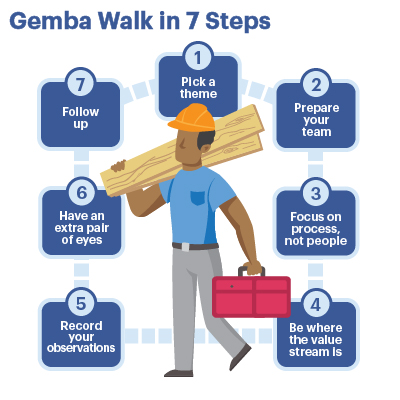
Gemba Walk Benefits
Lean experts encourage “going to the gemba” to see how things are really done and where there is an opportunity to eliminate or reduce waste.
The 3 P’s of Gemba
When performing a gemba walk, it is important to remember the “3 P’s of gemba” to help guide the process. The 3 P’s of gemba are Purpose, Process, and People.
Purpose
During a gemba walk, one should seek to fully understand the purpose of the work being done.
Is each person involved in the process adding to the value stream? Do the people doing the work understand what they’re doing and why? Are the working standards up to par with expectations? These are just some questions that can be asked regarding “purpose” during the gemba walk.
Process
In Lean methodology, constantly analyzing the process is paramount to ensuring a system of continuous improvement. Does the work flow properly or is there wasted time where workers are relying on others to complete tasks? Is the process utilizing pull properly? The process identifies areas for improvement in the workflow itself.
People
The people are the ones that make or break any Lean process. During a gemba walk, it’s imperative to discover whether there is buy-in and trust between the workers on the project. Interact with the people on the job at all levels of operation and ask them questions about what they’re doing and why they’re doing it. Foster an environment where sharing is encouraged and where anyone can step up to become a leader.

Gemba Walk Training
Gemba training at LCI Congress is a 55-minute presentation, reinforced by custom videos and interactive group discussions, that explains how to perform a Gemba Walk and provides attendees with a basic understanding of continuous improvement.
Photo by Jose Felsmann, Southland Industries, via the LCI Congress event app
Safety Gemba Walk
A safety gemba walk is a process of physically observing the safety measures of a project happening in real time and determining areas for improvement in employee safety. The difference between a regular gemba walk and a safety walk is that a safety walk is focused chiefly on the workplace safety of the job.
Since one of the main principles behind Lean methods is improving the safety of employees and eliminating workplace injuries where possible, fostering a safety culture through Lean safety gemba walks is crucial.
Gemba Walk Questions
When preparing a set of questions for a gemba walk, it’s important to eliminate any yes-or-no questions. More productive questions start with “what,” “why,” or “how?” The purpose is to facilitate conversation and identify wasteful activities within the standard work flow.
In this particular project, a lot of different trades are involved in completing the project. During the gemba walk, it’s important to analyze the workflow and how one trade hands off to the other. Does the process increase efficiency and decrease rework requests?
Gemba Walks: Learning More
The Lean Construction Institute is committed to transforming the design and construction industry by providing educational resources, conducting surveys and research, and facilitating local and national Lean events. It is only through the power of the LCI Corporate Members that LCI is able to offer the supplementary resources below.
More Lean Topics
From 5s to IPD, explore popular Lean design and construction topics below.


